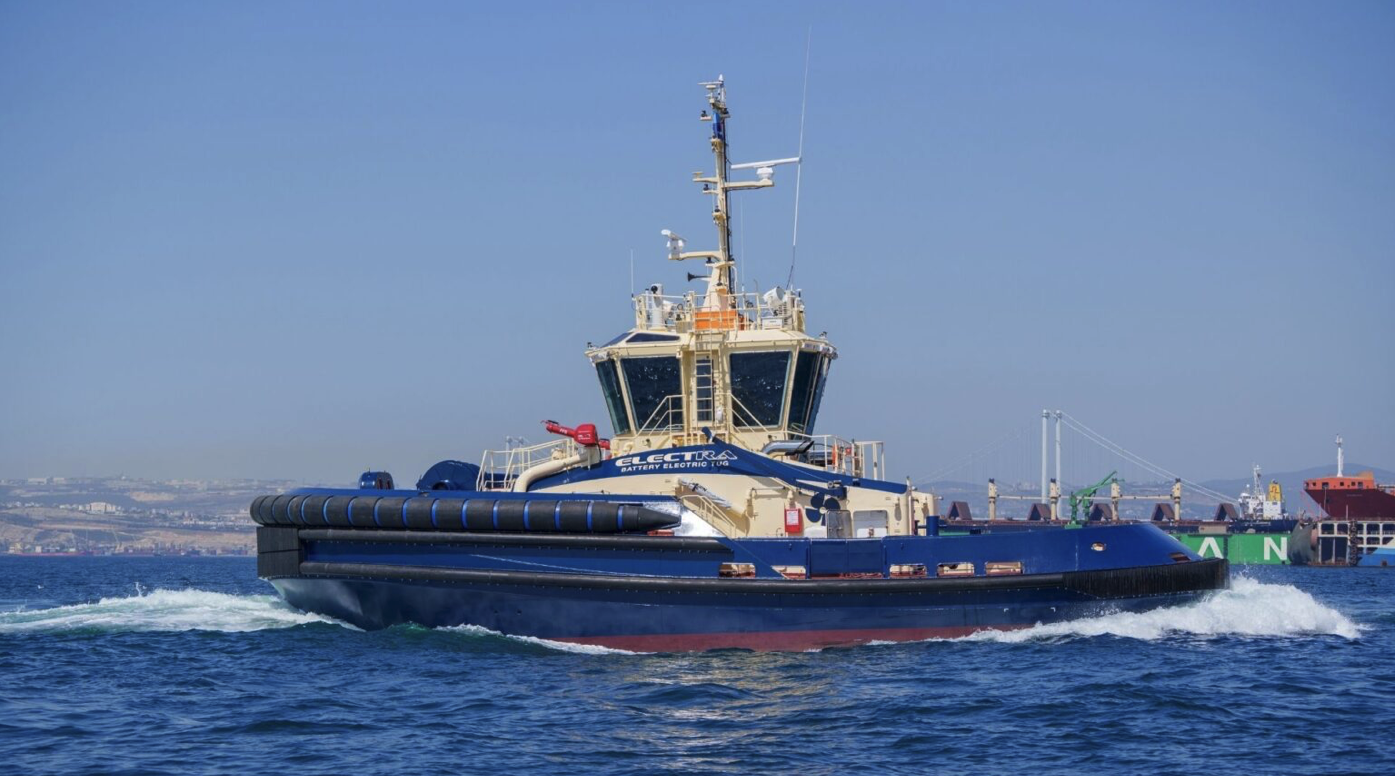Battery-powered tugboats need generators to remain strategic assets in ports

Electric-powered tugs are coming to towage markets worldwide, but if they are to be classed as strategic maritime assets in ports, they need back-up generators to ensure they are available for ship towageBattery-electric tugboat use is increasing globally, with 42 electric-propulsion tugs operating in ports to date and 10 more to be delivered this year, providing low or zero-emissions towage.
They are proving to be efficient and beneficial to port environments. However, corresponding quayside charging infrastructure and an ability to continue operating efficiently without their performance degrading is necessary when power from the energy storage system is low. For this, generator sets need to be included in their propulsion system, enabling an alternative way to power thrusters and provide the bollard pull required to handle ships or operate outside battery power range.
Technology and battery chemistry are improving, enhancing energy storage and the range of harbour tugboats with these systems on board. But for tugs to be reliable and complete the missions they are built for, and be ready to support ships in emergencies, they need more in the power room than just the battery modules and must have a back-up genset.
Builders are developing and testing tug designs which use only batteries for zero emissions during towage. If these fully electric vessels are supported by shore charging and only work within harbours, this would be suitable, but not if they need to operate outside of these confines.
The European Tugowners Association (ETA) is calling for harbour tugs to be classified as strategic maritime assets alongside military vessels, dredgers and icebreakers.
This is a worthy call and should be incorporated into the upcoming European Union’s Maritime Industrial Strategy, enabling tug owners to benefit from the European Defence Industry Programme and Readiness 2030.
The ETA is also calling for upcoming European Port Strategy to recognise marine services, especially towage, as indispensable to port safety.As the ETA says, “Towage vessels are indispensable for the safe and efficient manoeuvring of ships and are also frontline responders in emergency situations, contributing to environmental protection and maritime security.”Tugboat fleets must be ready to support ships around harbours and be prepared to respond to port and ship emergencies, protecting human lives, infrastructure and marine and coastal environments, which means having an instant back-up to batteries.
Using current technology, a genset would need to be installed, perhaps running on biofuel or compressed hydrogen, or another low-carbon fuel such as methanol. This could be replaced with hydrogen fuel cells as the alternative power generator when this is available, but until then, the genset would be driven by internal combustion engines.
Thus, an integrated propulsion system on tugs could feature energy storage as their primary power and generators for secondary and auxiliary use, to be ready to use in emergencies, to return to quaysides, extend range, charge batteries, drive fire-fighting system pumps and provide additional bollard pull when needed. This must be supported with shore charging stations linked to their own batteries and renewable energy sources for zero emissions.
Source ¨Riviera Maritime Media Martin Wingrove
